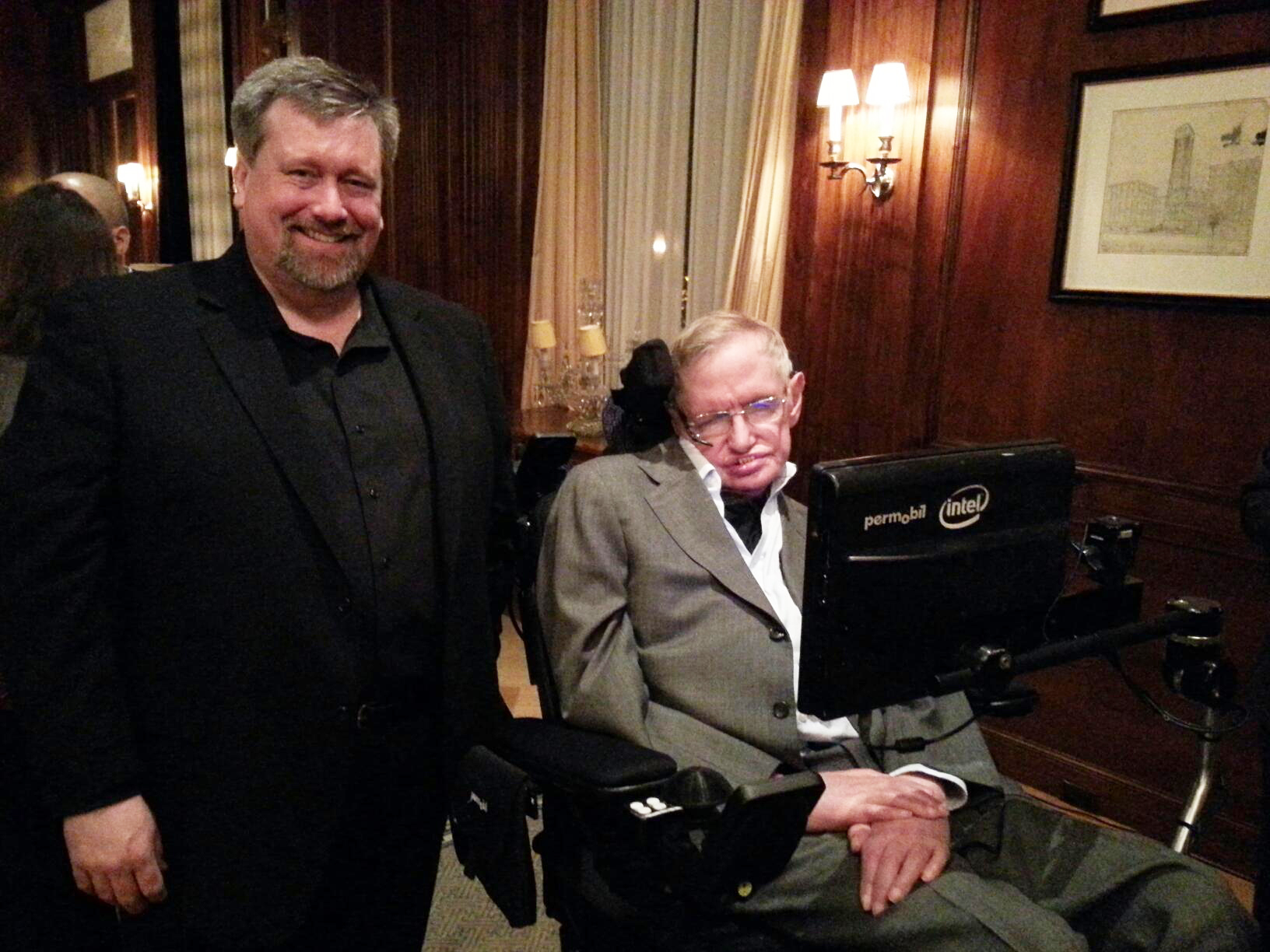Cornellians to advise Starshot exploring Alpha Centauri
By Syl Kacapyr

Cornell faculty and alumni are helping to advise Breakthrough Starshot – a $100 million research and engineering project aiming to demonstrate proof of concept for light-propelled nanocraft that could capture and send back images and scientific data in our nearest star system, Alpha Centauri.
The project was announced April 12 during a press conference in New York City by philanthropist Yuri Milner and renowned cosmologist Stephen Hawking, who say the goal is to fly nanocraft at 20 percent the speed of light and reach Alpha Centauri within 20 years of their launch.
Among those advising the project will be Mason Peck, associate professor of mechanical and aerospace engineering, and his former student Zac Manchester, Ph.D. ’15, now a researcher at Harvard University. Peck and Manchester have engineered tiny, cracker-sized satellites called “Sprites,” which are serving as models for how the Breakthrough Starshot nanocraft could be designed.
“This kind of project is the reason I got into aerospace engineering in the first place,” said Peck. “It represents a terrific technical challenge, and it can fundamentally improve how we see our place in the cosmos.”
The Breakthrough Starshot nanocraft will likely be similar to the Cornell Sprites in that they will have to pack a lot of technology, yet be inexpensive to produce so that large numbers could be deployed. Each craft will be attached to a thin “lightsail” just a few atoms thick and be pushed by a laser light beam shot from Earth, creating an effect much like wind pushing a sail boat.
Other Cornellians serving on the project’s management and advisory committee are former astronaut Mae Jemison, M.D. ’81; Princeton professor Bruce Draine, Ph.D. ’78; Planetary Society founder Louis Friedman, M.S. ’63; theoretical physicist Freeman Dyson, who taught at Cornell from 1951-53; and Ann Druyan, author and producer of the PBS documentary series Cosmos, and board member of Cornell’s Carl Sagan Institute.
The research and engineering phase of the project is expected to last a number of years. The project’s board, which includes Facebook CEO Mark Zuckerberg, says that while Breakthrough Starshot faces significant engineering challenges, the key elements of the proposed system are based on technology either already available or likely to be attainable in the near future under reasonable assumptions.
The Cornell Sprites serve as a perfect example of existing engineering. Peck has been working on the technology for close to a decade and said, “We’ve had some successes in flight experiments. I hope that this can contribute in some way to the Starshot project.”
The first Sprites were launched to the International Space Station in 2011 and were brought back to Cornell in 2014, demonstrating that they could survive outside the environment of low-Earth orbit. In 2014 the Kicksat I mission took 104 Sprites to orbit thanks to funding received from the public via the Kickstarter.com. Kicksat II plans to launch this summer.
Each miniature sprite is outfitted with a radio transceiver, microcontroller and solar cells, but the Starshot nanocraft will have to pack even more technology.
“Earth is a wonderful place, but it might not last forever,” said Hawking during the press conference. “Sooner or later, we must look to the stars. Breakthrough Starshot is a very exciting first step on that journey.”
Syl Kacapyr is public relations and content manager for the College of Engineering.
Media Contact
Get Cornell news delivered right to your inbox.
Subscribe